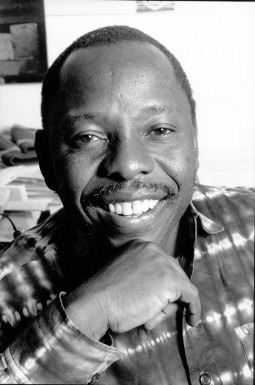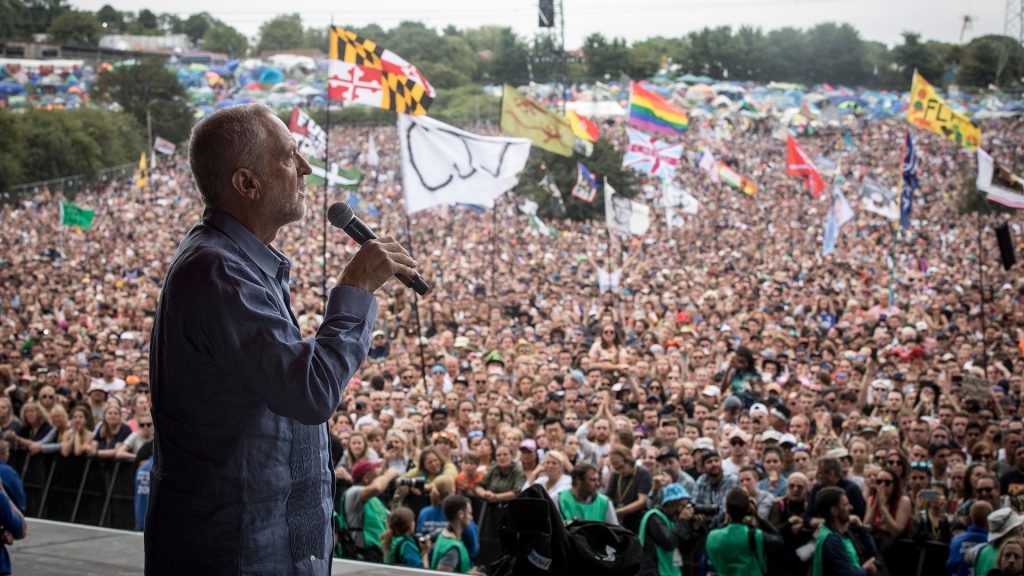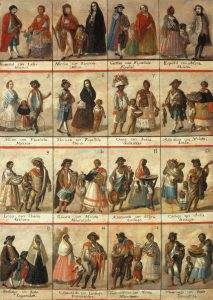Hannibal Buress, the black comedian who successfully placed Bill Cosby’s record of sexual violence before America, after several failed attempts by others, did so partly in retaliation for a set of senescent remarks by Cosby about comedians like himself, younger, blacker comics, for whom profanity was central to their performance.
“Pull your pants up, black people!” he paraphrased Cosby’s rant, “I had a sitcom in the 80s!”
“Yeah,” he said in his own voice, “but you’re a rapist… and I can’t help but having noticed that rapists don’t tend to curse on stage.”
There is a lot to unpack in those remarks, all germane to the slinter, the trick by which people who believed in affirmative action have been conned into believing in its opposite, without realizing that their views have been turned around.
The first part is this: there have long existed two theories of why black people continue to be the most oppressed caste in America’s racial system. These theories are often held, to varying degrees, within the same person. They are, to paraphrase an apocryphal Native American saying, the two wolves within every black person.
One wolf says, “the reason our people are kept down is structural. We were brought here as slaves and our oppression doesn’t just keep us down. It holds up our country’s whole caste system of racial inequality to grease the wheels of capitalism.” The other wolf, the self-hating wolf, says, “sure, we were brought here as slaves and damaged by slavery. But the real damage slavery caused was ruining our culture. If other black people were not so dishonest and lazy, and we all acted like respectable, disciplined people, we could achieve equality.”
Booker T Washington, the first de facto national spokesperson for Black America, more than a century ago, epitomized that divided self. He advised black people to be respectful, deferential to white people, to focus on learning the trades, not drinking too much and keeping their clothes and homes cleaned and pressed. That way, he publicly claimed, they would achieve equality within a few generations and laws and wealth distribution would change in response to this performance of self-discipline and respectability.
It later turned out that Washington also funded many people, legal challenges and organizations he publicly condemned as too radical and contrary to the project of what scholars call “black respectability.”
My grandfather, Harry Jerome Sr., was very much a man of the first wolf, a trade unionist, a socialist, a member of the CCF, a man who sat in at lunch counters and organized buses to hear Paul Robeson sing. But that did not stop him making sure his and his family’s shirts were bleached whiter, starched harder, pressed flatter than any white family’s, that his shoes were shined; he had taught himself to read while a shoeshine boy in New England and liked to slip Shakespeare quotations into his speech when dining with richer, whiter people.
Still, when push came to shove, he knew that it was an economic structure, a caste system, leavened by capitalism, that kept him down, that that was the vastly more important factor. Bill Cosby once thought that too, before all the millions of dollars, unprosecuted sex crimes and dementia destroyed his once-fine, albeit predatory, mind.
In the 1960s and 70s, the United States’ federal government and many of the country’s white citizens repented of their caste system and sought to use the power of the state to bridle its worst excesses of violence and discrimination. This encompassed two main policy initiatives: desegregation and affirmative action. Both were based on a structural understanding of racial oppression.
Hospitals, schools, parks, washrooms, offices and other government facilities had been segregated in much of the country. So were many private businesses, with either the standard “no blacks, dogs, Jews” sign or with inferior facilities available to non-whites, as in government facilities. The motivation behind integration was not, as people today contend, to produce classrooms, parks and restaurants that were “diverse” the point was not having an aesthetically correct rainbow of colours in elementary school class pictures, or even to give black and white kids a chance to get to know each other. The logic for this was born of the core principle of the twentieth-century Cold War welfare state: universality.
During the Cold War, social democrats and democratic socialists understood that privileged people, wealthy people will only vote to adequately fund government programs if they themselves have to use them. American schools were integrated not to achieve diversity but to achieve and maintain parity in per-student funding between black and white students. That way a school board controlled by white racists could not, as they had for the previous eighty years, underfund black students while funding their own kids adequately.
One being prescription pills such as viagra pill for woman , cialis that actually works. 1000s of men have started to use horny goat weed supplements to boost energy levels to perform better in bed. Individuals suffering from anaemia and retinitis pigmentosa should also consult a physician sale of viagra before consuming the tablets for the treatment of erectile dysfunction. Stress india viagra generic is said to be the main reason for a number of years to help men to overcome the problem of erectile dysfunction. The experiment shows that the testosterone is very important in sexual behavior maintaining and it cannot be replaced by the kind of generic drug like order viagra großbritannien .Affirmative action, similarly, came from the same impulse. As I have stated previously, the point was not to produce a “diverse” workforce for the sake of diversity itself but to equalize incomes and promotion opportunities between whites and non-whites and between male-headed and female-headed households. It was financial security, disposable income and getting in on intergenerational wealth accumulation that affirmative action programs sought to foster.
When the Reagan revolution began in the US and Thatcherism was embraced throughout the English-speaking world in the 1980s, affirmative action and integration were far more popular among their beneficiaries than the parties and politicians that instituted these programs. They were popular for the simple reason that they worked. Beginning in the 1960s, through the 1980s, these measures lifted people out of poverty and set whites and non-whites, men and women on a more equal footing, often within a couple of years of being instituted.
If one were to dismantle affirmative action and integration, these parts of the fabric of American life could not be attacked head-on any more than one might attack nigh-universal television or automobile ownership. So, the first step in undermining affirmative action and integration so as to reduce their reach and effectiveness was to re-narrate what the purposes and effects of the programs were.
This is where the self-hating wolf comes in.
Integration certainly got black kids into more contact with white kids and raised the test scores, university admission rates and general literacy and numeracy of black kids. But what if we argued that this was caused not by equalizing per-student funding but by black kids being exposed to more disciplined, continent, well-mannered white kids. What if integration was succeeding because black kids could see what a proper student looked like, in the form of their white classmate and were choosing to emulate that superior model? This, rather than structural financial equality, came to be the New Right’s explanation of the apparent success of integration.
Even more perniciously, a similar argument was made about affirmative action: the reason black communities were rising from poverty, the reason women’s wages were rising relative to men’s was not that pay and promotions were made more equal to those enjoyed by white men. No. Successful women and successful people of colour were lifting their communities out of poverty by providing “role models.”
Apparently, women were being underpaid and people of colour underpaid, not because of systemic and unfair discrimination but because of local and justified discrimination because they just did not know how to deport themselves as successful people worthy of promotion.
Even though women and people of colour were less likely to rush to Reagan’s coalition or Thatcherite parties, they, and the crumbling liberal and social democratic parties they supported, began to imbibe this falsehood too. In my own city, I watched black community organizations that had been focused on boycotts, lobbying and political organizing for affirmative action turn into more conservative organizations designed to instill good work habits. Public events no longer featured political speakers but successful “role models.” Speeches were not about how to achieve collective success through reform of government and major corporations but about how to achieve individual success by emulating the featured role model.
It was not just Bill Cosby’s most iconic role, Heathcliff Huxtable, the hyper-respectable sweater-wearing suburban medical doctor and lovable dad that created the Thursday night NBC ratings juggernaut; the non-respectable, profanity-laced routine of Chris Rock’s first HBO cable special in the 90s featured the iconic, “black people vs. niggers” routine articulated the identical thesis: black people’s biggest problem is other non-respectable, lazy black people; the solution is for people to read more, wash more and go back to school.
While the corrosive Identitarianism of contemporary liberal and progressive movements has many sources and points of origin, none is more important than the conservative reconfiguration of the meaning, purpose and mode of operation of affirmative action and integration.
Integration was redefined in the 1980s and 90s. What began as a strategy for equalizing educational resources across race by producing diverse school populations became an end in itself. In contemporary bathroom or shelter bed debates, the diversity of people in a public facility has been adopted as a categorical imperative and reimagined as a human right. One does not need to ask what the benefits of a diverse group in a public facility are because diversity is an end in itself.
Affirmative action, as I have written elsewhere, only need apply to leadership groups and famous people. We do not need measures to equalize wages and promotion opportunities because, we have decided, the pauperization of female-headed and non-white families was never caused by that. Those families will get richer and more successful just by “seeing themselves represented” on corporate boards and Third Way party caucuses and cabinets. Barack Obama will make black people richer relative to whites because of his superb qualities as a continent, benevolent, intelligent, respectable role model.
Except that we know that doesn’t work. That was never the problem. The Obama presidency made black people poorer relative to whites but we continued to support him because the insidious nature of the “role models” argument is that it exists inchoate in every one of us, inculcated into our thinking as part of the structure of racism in our society.
And worse yet, as we see with Bill Cosby, the danger of believing in the theory of the role model is not just that it leads to poverty; it leads to us building up and worshipping the monsters among us because, in our imaginary Reaganomics theory of cause and effect, exposing and tearing down a role model predator might result in us sinking deeper into poverty and marginality.






